
94% of researchers rate our articles as excellent or good
Learn more about the work of our research integrity team to safeguard the quality of each article we publish.
Find out more
SYSTEMATIC REVIEW article
Front. Pharmacol., 07 February 2022
Sec. Renal Pharmacology
Volume 13 - 2022 | https://doi.org/10.3389/fphar.2022.819327
Background: Chronic kidney disease (CKD) is a global public health issue. In recent years, the effectiveness of finerenone for treatment of CKD has been the subject of considerable debate. The main objective of the current meta-analysis was to validate the clinical efficacy and safety of finerenone in patients with CKD.
Methods: Seven databases were searched for randomized controlled trials (RCTs) comparing finerenone with placebo in patients with CKD. Data from eligible studies were extracted, and the Cochrane risk of bias tool utilized for evaluating the methodological quality of RCTs. The effect size was estimated using the risk ratio (RR) and mean difference (MD) with 95% confidence interval (CI).
Results: Five trials (n = 13,078) were included. Compared to placebo groups, the urinary albumin-to-creatinine ratio (UACR) mean from the baseline was significantly lower [MD −0.30 (95% CI −0.32, −0.28), p < 0.00001], while a decrease in the estimated glomerular filtration rate (eGFR) from baseline was significantly higher [MD −2.44 (95% CI −2.82, −2.05), p < 0.00001] for the finerenone groups. Furthermore, the proportion of patients with decreased eGFR (≥40%) post-baseline was significantly lower [RR 0.85 (95% CI 0.78, 0.93), p = 0.0002], along with end-stage kidney disease (ESKD) [RR 0.80 (95% CI 0.65, 0.99), p = 0.04] and cardiovascular events (CVs) [RR 0.88 (95% CI 0.80, 0.95), p < 0.003] in the finerenone groups. In terms of safety, the increase in the serum potassium concentration and incidence of hyperkalemia was significantly higher for the finerenone groups [MD 0.17 (95% CI 0.10, 0.24), p < 0.00001; RR 2.03 (95% CI 1.83, 2.26), p < 0.00001, respectively], but the incidence of adverse events (AEs) was similar to placebo [RR 1.00 (95% CI 0.98–1.01), p = 0.67]. In all cases, the results were rated as providing moderate-quality or high-quality evidence.
Conclusion: Data from our meta-analysis suggest that finerenone confers significant renal and cardiovascular benefits in patients with CKD. While higher risk of hyperkalemia was observed with finerenone than placebo, differences in AEs were not significant. Finerenone may therefore present a novel promising therapeutic agent for patients with CKD.
Systematic Review Registration: [https://inplasy.com/inplasy-2021-9-0020/], identifier [INPLASY202190020].
Chronic kidney disease (CKD) is a major global health issue posing a heavy burden on society, with a reported estimated prevalence of 9.1% (GBD Chronic Kidney Disease Collaboration, 2020). Multiple factors are involved in the pathophysiological development of CKD, including aldosterone, a steroid hormone and downstream target of the renin angiotensin system (RAS) (Barrera-Chimal et al., 2019; Ingelfinger and Rosen, 2020). The adrenal steroid hormone binds the mineralocorticoid receptor (MR), promoting sodium retention and potassium loss and thereby controlling the electrolyte status. Considerable evidence supports a pathophysiological role of aldosterone via MR overactivation in CKD and cardiorenal diseases through induction of inflammation and fibrosis that leads to progressive kidney and cardiovascular dysfunction (Bakris et al., 2021; Epstein, 2021). In addition, cardiovascular disease (CVD) is the leading cause of death and morbidity in people with chronic kidney disease (Epstein, 2015). Strategies to protect the kidneys of patients with CKD may mitigate their risk of cardiovascular events (Filippatos et al., 2021).
Currently, the steroidal mineralocorticoid receptor antagonists (MRAs) including the first-generation spironolactone and the second-generation eplerenone are strongly recommended for patients with CKD and chronic heart failure (CHF) (Ponikowski et al., 2016; Pitt et al., 2017; Maddox et al., 2021). However, these agents remain underutilized, largely due to safety concerns regarding the potential development of hyperkalemia, worsening renal function, gynecomastia and impotence (in men), and menstrual disturbances (in women) (Bakris et al., 2021). More recently, third-generation MRA using non-steroidal molecules have been developed that more selectively enhance benefits and minimize risks owing to altered receptor affinity and tissue tropism (Bramlage et al., 2016). Finerenone (BAY 94-8662) is a novel potent, non-steroidal, selective MRA developed for the treatment of CKD (Georgianos and Agarwal, 2021). Compared with the currently available steroid-based MRAs, finerenone has greater selectivity for the MR over other steroid hormone receptors than spironolactone and improved affinity for MR in relation to eplerenone while maintaining very low affinity for androgen, glucocorticoid, and progesterone receptors, with more potent anti-inflammatory and antifibrotic efficacy in preclinical models (Bramlage et al., 2016; Grune et al., 2018). In addition, comparative preclinical studies have revealed favorable properties of cardiorenal end-organ protection (Kolkhof et al., 2014; Grune et al., 2018). Thus, finerenone may effectively address the unmet medical need for kidney and cardiovascular protection.
In recent years, several clinical researchers have focused on the efficacy and safety of finerenone. The FDA has approved finerenone to reduce the risk of kidney function decline, kidney failure, cardiovascular death, non-fatal heart attacks, and hospitalization for heart failure in adults with chronic kidney disease associated with type 2 diabetes (FDA, 2021). The current meta-analysis was performed to comprehensively evaluate the efficacy and safety of finerenone for CKD based on documented phase 2 and 3 randomized controlled trials (RCTs), with a view to providing substantial evidence for supporting its clinical application in a wide range of patients.
This review complies with the PRISMA 2020 statement: an updated guidance and exemplars for reporting systematic reviews (Page et al., 2021a; b) (Supplementary Table S1).
We comprehensively searched PubMed, Embase, Cochrane Library, SinoMed, China National Knowledge Infrastructure (CNKI), WanFang, and Chongqing VIP Information databases from inception until September 2021 for RCTs investigating the utility of finerenone for CKD in adults. Additional studies were searched in the reference lists of all identified publications, including relevant meta-analyses and systematic reviews (Supplementary Table S2).
The inclusion criteria were as follows: (I) study design: RCT, (II) comparison: evaluating the efficacy and safety of finerenone with that of a placebo, (III) population: patients with CKD, and (IV) outcome: assessment of at least one of the following outcomes: 1) primary outcomes: UACR from the baseline, change in eGFR; secondary outcomes: proportion of patients with ≥40% decrease in eGFR at any time post-baseline, proportion of patients with ESKD, CVs, changes in serum potassium concentration, proportion of patients with hyperkalemia, and 2) AEs.
Two reviewers (M-ZZ and WB) extracted data from the original trials independently. Data extracted included study characteristics (first author, publication year, location, sample size, intervention and control, period of treatment and duration of follow-up, and phase of clinical trial), characteristics of patients (inclusion criteria, mean age, proportion of men, baseline eGFR, and baseline UACR), reported outcomes (UACR, eGFR, ESKD, CV events, serum potassium concentration, hyperkalemia, and AEs), and information on methodology.
The risk of bias of RCTs was assessed using the Cochrane Collaboration’s tool (Higgins et al., 2021). Two investigators (WB and M-ZZ) independently completed the assessments. If necessary, any disagreement was resolved by consensus with a third author (Y-HW). In addition, the Grading of Recommendations Assessment, Development, and Evaluation (GRADE) framework was employed to evaluate the quality of evidence contributing to each estimate. GRADE can be effectively applied to characterize the quality of a body of evidence on the basis of study limitations, imprecision, inconsistency, indirectness, and publication bias for all outcomes (Higgins et al., 2021).
Data entry and analysis were conducted using Excel 2019 (Microsoft, Redmond, WA, United States) and ReviewManager (RevMan) 5.4.1. The mean difference (MD) with 95% confidence interval (CI) of the outcomes and the risk ratio (RR) were calculated as the effect measure. The I2 statistic for heterogeneity was calculated as a measure of the proportion of the overall variation attributable to between-study heterogeneity. A fixed-effects model was chosen if I2<50%; otherwise, the random-effects model was used. A subgroup or sensitivity analysis was conducted to explore the underlying causes of heterogeneity in treatment outcomes. Publication bias was examined by visual inspection of the funnel plots. In cases where only a few studies are included in the analysis, the power of the tests is too low. Accordingly, publication bias was only examined if > 10 comparative studies were included for analysis (Higgins et al., 2021). Upon the inclusion of several subgroups for analysis (finerenone dose ≥10 mg/d), outcomes were pooled. In cases where standard deviations of UACR, eGFR, or serum potassium concentration could not be directly obtained from the trials, the mean and deviation were estimated from the confidence interval (Higgins et al., 2021).
Following our search, 132 relevant articles were identified, among which 48 were duplicates. Subsequently, 84 titles and abstracts were screened, with the full-text screening of seven articles. Finally, five eligible studies (Pitt et al., 2013; Bakris et al., 2015; Katayama et al., 2017; Bakris et al., 2020; Pitt et al., 2021) (14,335 participants) were included in our analysis of the efficacy and safety of finerenone for CKD. Figure 1 depicts the screening process, and Supplementary Table S3 presents the main characteristics of the included trials. One trial (Pitt et al., 2013) enrolled patients with CKD and heart failure with reduced ejection fraction (HFrEF), one (Bakris et al., 2015) enrolled patients with diabetic nephropathy (DN), one (Katayama et al., 2017) enrolled patient with DN and type 2 diabetes mellitus (T2DM), and the other two (Bakris et al., 2020; Pitt et al., 2021) enrolled patients with CKD and T2DM. All trials reported the clinical benefit of finerenone and adverse events in patients with CKD, ranging from 96 to 7,352 patients per study.
The risk of bias for the included RCTs was assessed using the Cochrane Risk-of-Bias tool. None of the RCTs had an overall low risk of bias. Two RCTs (Bakris et al., 2020; Pitt et al., 2021) had an unclear risk of bias for sequence generation, three (Pitt et al., 2013; Bakris et al., 2020; Pitt et al., 2021) for allocation concealment, and one (Katayama et al., 2017) for the blinding of outcome assessment. Three RCTs (Bakris et al., 2015; Bakris et al., 2020; Pitt et al., 2021) had high risk of bias for selective reporting, since some outcomes mentioned in a prespecified analysis plan were not reported. All RCTs (Pitt et al., 2013; Bakris et al., 2015; Katayama et al., 2017; Bakris et al., 2020; Pitt et al., 2021) were categorized as low risk of bias for blinding of participants and personnel as well as for incomplete outcome data and other items. The risk of bias assessments of included trials is shown in Figure 2.
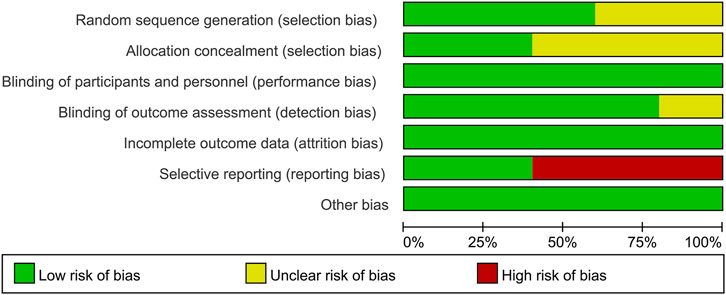
FIGURE 2. Risk of bias graph: Data for each risk-of-bias item presented as percentages across all included studies.
Five trials (Pitt et al., 2013; Bakris et al., 2015; Katayama et al., 2017; Bakris et al., 2020; Pitt et al., 2021) compared the urinary albumin-to-creatinine ratio (UACR) of finerenone (n = 6,732) versus placebo (n = 6,364) groups of CKD patients. As shown in Figure 3, the UACR mean from baseline was significantly lower for finerenone than for placebo [MD −0.30, 95% CI (−0.32, −0.28), p < 0.00001].
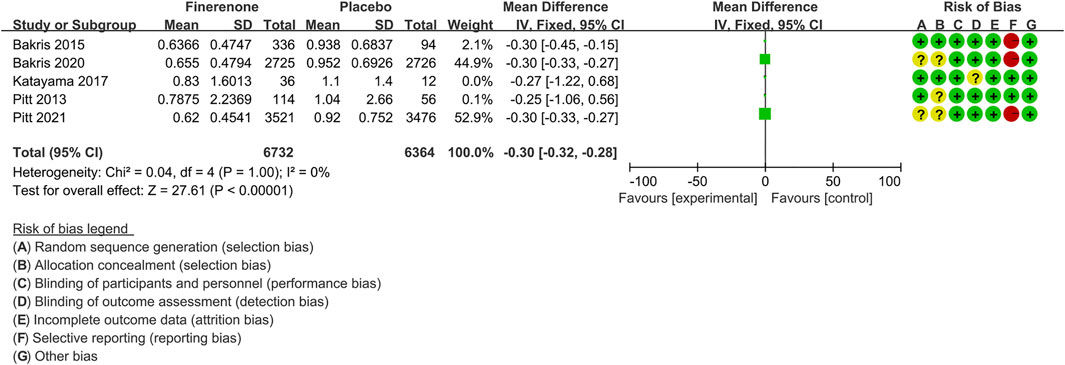
FIGURE 3. Meta-analysis results of mean of the UACR from the baseline for finerenone and placebo patient groups.
Four trials (Pitt et al., 2013; Bakris et al., 2015; Katayama et al., 2017; Bakris et al., 2020) compared estimated glomerular filtration rate (eGFR) values between finerenone (n = 3,207) and placebo (n = 2,883) CKD patient groups. As shown in Figure 4, the decrease in eGFR from baseline was significantly higher with finerenone than with placebo [MD −2.44 (95% CI −2.82, −2.05), p < 0.00001].

FIGURE 4. Meta-analysis results of changes in the eGFR from the baseline for finerenone and placebo patient groups.
Three trials (Bakris et al., 2015; Bakris et al., 2020; Pitt et al., 2021) compared the proportion of patients showing a ≥40% decrease in the eGFR at any time post-baseline between the finerenone (n = 6,852) and placebo (n = 6,600) CKD patient groups. The proportion of patients was significantly lower for the finerenone than for the placebo treatment group [RR 0.85 (95% CI 0.78, 0.93), p = 0.0002], as shown in Figure 5.
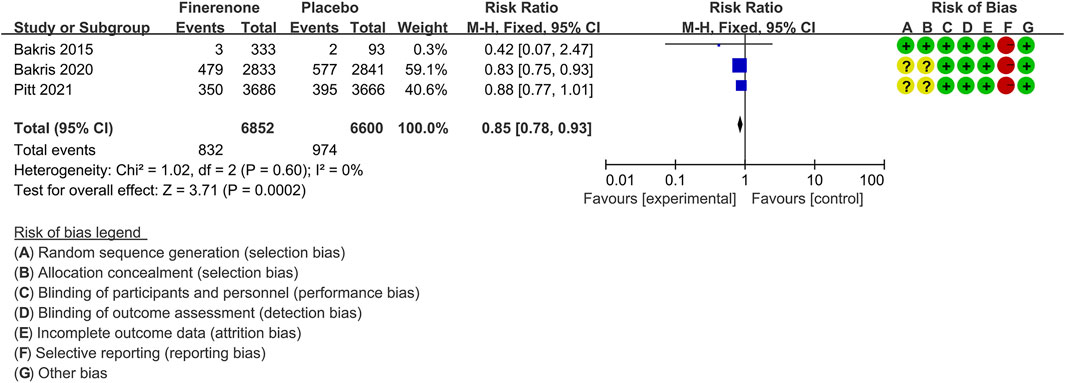
FIGURE 5. Meta-analysis results of the proportion of patients with ≥40% decrease in the eGFR in finerenone versus placebo patient groups.
Two trials (Bakris et al., 2020; Pitt et al., 2021) compared the proportion of CKD patients with ESKD following treatment with finerenone (n = 6,519) versus placebo (n = 6,507). The overall results showed a significantly lower proportion of patients with ESKD in the finerenone than in the placebo group [RR 0.80 (95% CI 0.65, 0.99), p = 0.04] (Figure 6).
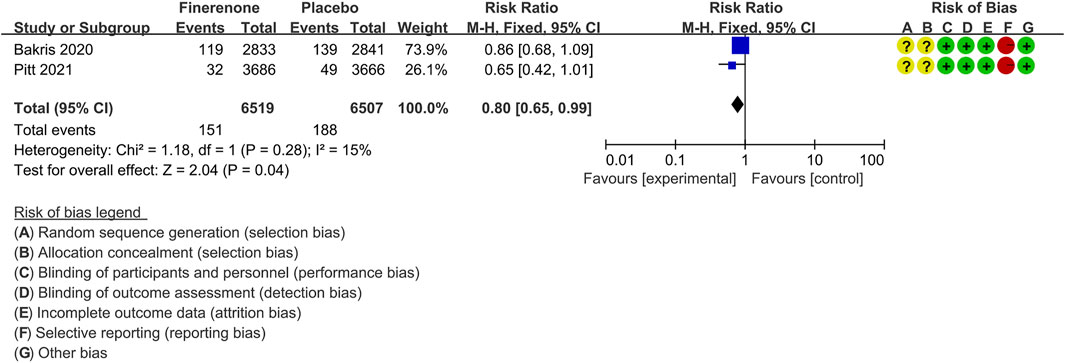
FIGURE 6. Meta-analysis results of the efficacy of finerenone versus placebo for end-stage kidney disease.
Four trials (Pitt et al., 2013; Bakris et al., 2015; Bakris et al., 2020; Pitt et al., 2021) compared the proportion of CKD patients with CVs between groups treated with finerenone (n = 6,992) versus placebo (n = 6,669). As shown in Figure 7, the proportion of patients experiencing CVs was significantly lower in the finerenone than in the placebo group [RR 0.88 (95% CI 0.80, 0.95), p = 0.003].
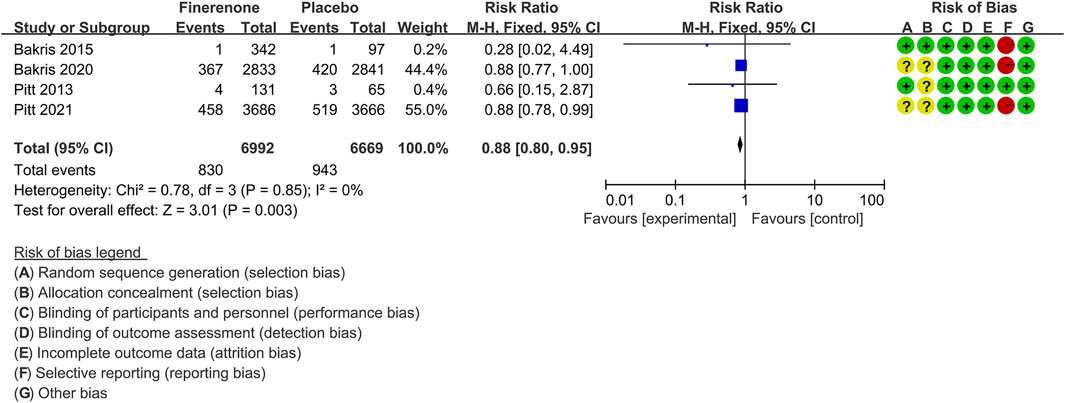
FIGURE 7. Meta-analysis results of the effect of finerenone versus placebo on cardiovascular events.
Five trials (Pitt et al., 2013; Bakris et al., 2015; Katayama et al., 2017; Bakris et al., 2020; Pitt et al., 2021) compared changes in the serum potassium levels in finerenone-treated (n = 6,847) versus placebo (n = 6,526) CKD patients. As shown in Figure 8, an increase in serum potassium was significantly higher in the finerenone group relative to placebo [MD 0.17 (95% CI 0.10, 0.24), p < 0.00001].
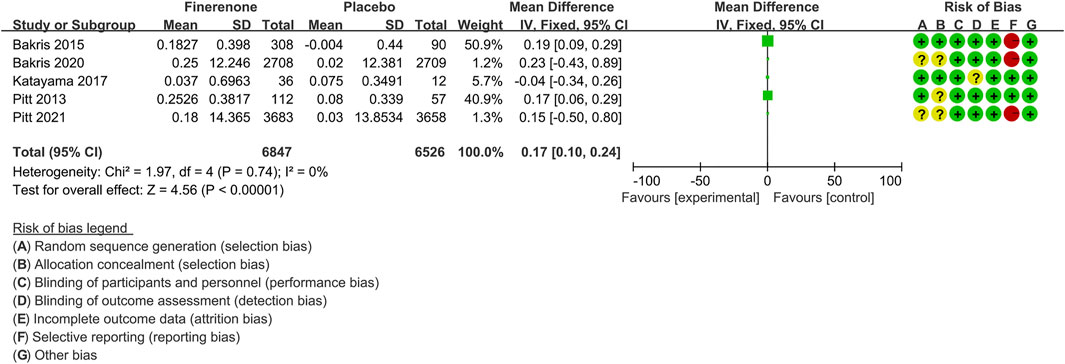
FIGURE 8. Meta-analysis results of changes in serum potassium concentration between finerenone and placebo patient groups.
Five trials (Pitt et al., 2013; Bakris et al., 2015; Katayama et al., 2017; Bakris et al., 2020; Pitt et al., 2021) compared the proportion of CKD patients with hyperkalemia in finerenone (n = 6,852) versus placebo (n = 6,583) groups. As shown in Figure 9, the proportion of patients with hyperkalemia was significantly higher in the finerenone than in placebo groups [RR 2.03 (95% CI 1.83, 2.26), p < 0.00001].
Five trials (Pitt et al., 2013; Bakris et al., 2015; Katayama et al., 2017; Bakris et al., 2020; Pitt et al., 2021) compared the proportion of CKD patients with AEs in finerenone (n = 7,019) versus placebo (n = 6,660) groups. As shown in Figure 10, the proportion did not show any difference in finerenone and placebo [RR 1.00 (95% CI 0.98–1.01), p = 0.67].
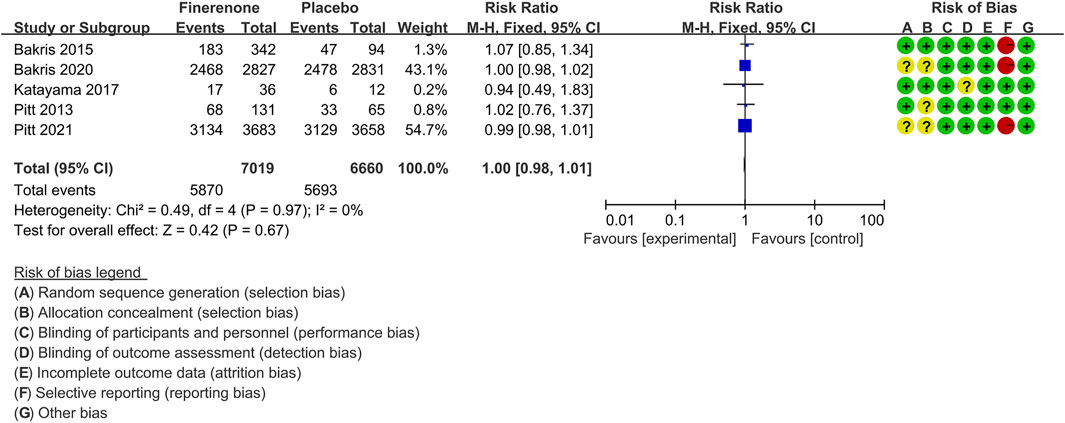
FIGURE 10. Meta-analysis results of adverse events in finerenone compared to placebo patient groups.
All outcome indicators were evaluated using GRADEproGDT. The quality of evidence was downgraded for the risk of bias and upgraded for the large effect. After comprehensive analysis, the summary of findings table was formed, and it was found that all outcome indicators were of moderate quality or high quality (Supplementary Table S4).
Publication bias was not examined because all outcome indicators were observed for less than 10 studies.
The current meta-analysis included studies that used doses of at least 10 mg/day finerenone to assess its overall efficacy and safety, with a view to establishing its optimal potential effects (Snelder et al., 2020). The large sample size of the current meta-analysis facilitated the assimilation of evidence obtained from ongoing clinical trials on the efficacy and safety of finerenone for patients with CKD. The overall results showed that for CKD patients, the UACR mean from baseline was decreased significantly in the finerenone relative to the placebo group. The proportion of patients with a ≥40% decrease in the eGFR at any time post-baseline was markedly lower, though changes in the eGFR from the baseline were reduced significantly in the finerenone relative to the placebo group. Moreover, the proportion of patients with ESKD and CVs was significantly lower for finerenone than that for placebo treatment groups. However, an increase in the serum potassium concentration and the incidence of hyperkalemia were significantly higher in the finerenone group. The incidence of AEs was similar between the groups. In all cases, results were rated as providing moderate-quality or high-quality evidence.
Published studies indicate a robust relationship between albuminuria reduction and slowing of CKD progression as well as reduced cardiovascular and heart failure risk (Schmieder et al., 2014; Yamout et al., 2014; Bakris et al., 2015). A study by Snelder (Snelder et al., 2020) showed that the UACR decreases with increasing finerenone concentrations. Doses of 10–20 mg once daily appeared safe and efficacious in reducing albuminuria. Data from laboratory models indicate that decreased UACR is the result of complex anti-inflammatory and antifibrotic effects through the inhibition of overactivation of the MR (Lattenist et al., 2017; Barrera-Chimal et al., 2018; Grune et al., 2018; Agarwal et al., 2021c). Finerenone is structurally distinct from steroidal MRAs in view of the lack of a steroidal nucleus and cofactor that binds to yield a relatively more pronounced antifibrotic effect (Kolkhof et al., 2014; Grune et al., 2018). These studies’ results are consistent with the findings of our meta-analysis. It should be noted that screening for albuminuria to identify at-risk patients among patients with type 2 diabetes facilitates reduction of both cardiovascular and kidney disease burden (Agarwal et al., 2021a).
Although our meta-analysis found that changes in the eGFR from the baseline were reduced significantly in the finerenone relative to the placebo group. Bakris’s study (Bakris et al., 2020) showed the that eGFR decreased more slowly with finerenone than with placebo after 4 months; the decrease in eGFR was smaller with finerenone after about 26 months. In addition to a regulatory role in electrolytes and fluid homeostasis in the kidney, MR activation exerts direct effects on the heart and vasculature, including stimulation of inflammation, collagen formation, fibrosis, and necrosis (Lattenist et al., 2017; Epstein, 2021). Finerenone controls inflammation by promoting the expression of M2-anti-inflamatory markers and reducing the population of inflammatory CD11b+, F4/80+, and Ly6Chigh macrophages (Barrera-Chimal et al., 2018). Finerenone has additionally been shown to improve endothelial dysfunction through enhancing nitric oxide (NO) bioavailability and decreasing superoxide anion levels based on the upregulation of vascular and renal superoxide dismutase activity in rats with chronic kidney disease (González-Blázquez et al., 2018). The direct antifibrotic properties of finerenone resulted in reduced myofibroblast and collagen deposition accompanied by a decrease in kidney plasminogen activator inhibitor (PAI)-1 and naked cuticle 2 (NKD2) expression in mouse models of progressive kidney fibrosis (Droebner et al., 2021). Our data showing that the relative risk of a sustained ≥40% decrease in the eGFR was reduced by 15%, ESKD by 20%, and FIDELITY analysis showed the relative risk of a sustained ≥57% decrease in the eGFR was reduced by 30% (Agarwal et al., 2021a). These results indicate that finerenone may have long-term renal benefits for CKD patients. Reduction of these outcomes, which is of great relevance to both patients and payers, is therefore notable.
The FIDELIO-DKD trial found that finerenone had a beneficial effect on the overall risk of CVs, regardless of preexisting CVD status among patients with chronic kidney disease and T2DM (Filippatos et al., 2021). Distinct from steroidal MRAs, macrophage invasion is reported to be potently blocked by finerenone while eplerenones exert no significant effect. In another earlier study, finerenone potently inhibited aldosterone-induced profibrotic gene tenascin-X (TNX) expression in a rat cardiomyocytic cell line whereas eplerenone exhibited only weak activity and spironolactone treatment did not result in the significant inhibition (Grune et al., 2018). Finerenone treatment induced a distinct cardiac gene expression profile, including differential expression of brain natriuretic peptide (BNP) and troponin T type 2 (Tnnt2), as well as significant reduction of transverse aortic constriction (TAC)-induced left ventricular (LV) wall thickening (assessed via echocardiography), suggesting that its beneficial effects on left ventricular mass development in the pressure overload are associated with the cardiac gene expression profile (Grune et al., 2016). Furthermore, finerenone has been shown to exert favorable vascular effects through restoring vascular integrity and preventing adverse vascular remodeling in different murine models of vascular injury (Dutzmann et al., 2017).
The serum potassium concentrations and incidence of hyperkalemia in the finerenone treatment group were increased relative to those in the placebo group. However, patients with high serum potassium baseline levels (especially >4.8 mmol) and poor renal function had a high risk for hyperkalemia whether in the finerenone groups or placebo groups (Agarwal et al., 2021b; Goulooze et al., 2021). Although finerenone was associated with a higher overall risk of hyperkalemia than placebo, a markedly lower incidence of hyperkalemia and lower mean change of potassium concentrations were observed in the finerenone than in the spironolactone group (Pitt et al., 2013; Kintscher et al., 2021). Since our data showed that finerenone increased kalemia by 0.17 mmol/L, finerenone should not be afraid of the risk of hyperkalemia because of the potential benefits of taking it (Baran et al., 2021). However, Randomized Aldactone Evaluation Study (RALES) cautions us about what also might come following the publication of impactful results from controlled trials (Moura-Neto and Ronco, 2021). Therefore, routine potassium monitoring and hyperkalemia management strategies [finerenone treatment interruption and dose reduction or adding other therapies (such as diuretics or potassium binders)] are essential, which will minimize the impact of hyperkalemia and enable sustained clinical use of finerenone (Clase et al., 2020; Agarwal et al., 2021a; Epstein et al., 2021; Moura-Neto and Ronco, 2021). Notably, AEs are not all related to the trial regimen, although our meta-analysis showed a comparable incidence of AEs between the finerenone and placebo groups.
Our study has a number of limitations that should be considered. First, we employed only published reports and could not entirely avoid potential publishing bias for negative results and small-scale studies. Second, this meta-analysis was limited by the relatively small number of studies (we included only three phase 2 and two phase 3 studies), and three of these five included trials are extremely small, only accounting for about 5% (682/13,078) of the total samples size. Third, the control intervention in our meta-analysis was only placebo, and no data were extracted from studies with positive drug controls. Further research is warranted to provide definitive evidence regarding the efficacy and safety of finerenone in comparison to the positive drug including spironolactone and eplerenone (ongoing RCTs about finerenone: NCT05047263, NCT05013008, and NCT04477707).
Data from our meta-analysis suggest that finerenone confers significant antiproteinuric benefits in patients with CKD, with a favorable effect on a decrease in the eGFR (≥40%). The use of finerenone resulted in lower incidence of ESRD and CVs in patients with CKD. Although a higher risk of hyperkalemia was observed with finerenone than with placebo, discontinuation of trial regimens owing to hyperkalemia was infrequent. No significant differences in AEs between finerenone and placebo groups were evident. The observed benefits of finerenone were clinically significant and did not cause unacceptable side effects. Our collective findings support the utility of finerenone as a novel promising therapeutic tool for patients with CKD.
The original contributions presented in the study are included in the article/Supplementary Material; further inquiries can be directed to the corresponding author.
All authors contributed to the conception, search terms and methodology of the review. M-ZZ, WB, and L-YS came up with the study idea. M-ZZ, WB, and L-YS designed the study. M-ZZ and WB completed the database searches and study selection. M-ZZ and WB completed the assessment of bias of the included studies. M-ZZ and WB extracted data from the included studies. M-ZZ, WB, Q-YZ, and Y-HW completed the meta-analyses. M-ZZ and WB wrote the first draft of the manuscript. M-ZZ, WB, Q-YZ, and Y-HW completed the critical revision of the manuscript. All authors contributed to the writing or revision of the final manuscript. And all authors have read and approve the final version submitted to this journal.
This research was funded by the National Key Research and Development Project of China (2018YFC1704304).
The authors declare that the research was conducted in the absence of any commercial or financial relationships that could be construed as a potential conflict of interest.
All claims expressed in this article are solely those of the authors and do not necessarily represent those of their affiliated organizations, or those of the publisher, the editors, and the reviewers. Any product that may be evaluated in this article, or claim that may be made by its manufacturer, is not guaranteed or endorsed by the publisher.
The Supplementary Material for this article can be found online at: https://www.frontiersin.org/articles/10.3389/fphar.2022.819327/full#supplementary-material
Agarwal, R., Kolkhof, P., Bakris, G., Bauersachs, J., Haller, H., Wada, T., et al. (2021c). Steroidal and Non-steroidal Mineralocorticoid Receptor Antagonists in Cardiorenal Medicine. Eur. Heart J. 42 (2), 152–161. doi:10.1093/eurheartj/ehaa736
Agarwal, R., Filippatos, G., Pitt, B., Anker, S. D., Rossing, P., Joseph, A., et al. (2021a). Cardiovascular and Kidney Outcomes with Finerenone in Patients with Type 2 Diabetes and Chronic Kidney Disease: the FIDELITY Pooled Analysis. Eur. Heart J. Epub ahead of print, ehab777. doi:10.1093/eurheartj/ehab777
Agarwal, R., Joseph, A., Anker, S. D., Filippatos, G., Rossing, P., Ruilope, L. M., et al. (2021b). Hyperkalemia Risk with Finerenone: Results from the FIDELIO-DKD Trial. Jasn 33, 225–237. doi:10.1681/asn.2021070942
Bakris, G. L., Agarwal, R., Chan, J. C., Cooper, M. E., Gansevoort, R. T., Haller, H., et al. (2015). Effect of Finerenone on Albuminuria in Patients with Diabetic Nephropathy: A Randomized Clinical Trial. Jama 314 (9), 884–894. doi:10.1001/jama.2015.10081
Bakris, G. L., Agarwal, R., Anker, S. D., Pitt, B., Ruilope, L. M., Rossing, P., et al. (2020). Effect of Finerenone on Chronic Kidney Disease Outcomes in Type 2 Diabetes. N. Engl. J. Med. 383 (23), 2219–2229. doi:10.1056/NEJMoa2025845
Bakris, G. L., Filippatos, G. S., Farmakis, D., Epstein, M., and Pitt, B. (2021). Aldosterone Antagonists and CVD. Washington, DC: American College of Cardiology. Available at: https://www.acc.org/latest-in-cardiology/articles/2021/07/19/13/42/aldosterone-antagonists-and-cvd (Accessed July 19, 2021).
Baran, W., Krzemińska, J., Szlagor, M., Wronka, M., Młynarska, E., Franczyk, B., et al. (2021). Mineralocorticoid Receptor Antagonists-Use in Chronic Kidney Disease. Int. J. Mol. Sci. 22 (18), 9995. doi:10.3390/ijms22189995
Bärfacker, L., Kuhl, A., Hillisch, A., Grosser, R., Figueroa-Pérez, S., Heckroth, H., et al. (2012). Discovery of BAY 94-8862: a Nonsteroidal Antagonist of the Mineralocorticoid Receptor for the Treatment of Cardiorenal Diseases. ChemMedChem 7 (8), 1385–1403. doi:10.1002/cmdc.201200081
Barrera-Chimal, J., Estrela, G. R., Lechner, S. M., Giraud, S., El Moghrabi, S., Kaaki, S., et al. (2018). The Myeloid Mineralocorticoid Receptor Controls Inflammatory and Fibrotic Responses after Renal Injury via Macrophage Interleukin-4 Receptor Signaling. Kidney Int. 93 (6), 1344–1355. doi:10.1016/j.kint.2017.12.016
Barrera-Chimal, J., Girerd, S., and Jaisser, F. (2019). Mineralocorticoid Receptor Antagonists and Kidney Diseases: Pathophysiological Basis. Kidney Int. 96 (2), 302–319. doi:10.1016/j.kint.2019.02.030
Bauersachs, J., and López‐Andrés, N. (2021). Mineralocorticoid Receptor in Cardiovascular Diseases-Clinical Trials and Mechanistic Insights. Br. J. Pharmacol. Online ahead of print. doi:10.1111/bph.15708
Bramlage, P., Swift, S. L., Thoenes, M., Minguet, J., Ferrero, C., and Schmieder, R. E. (2016). Non-steroidal Mineralocorticoid Receptor Antagonism for the Treatment of Cardiovascular and Renal Disease. Eur. J. Heart Fail. 18 (1), 28–37. doi:10.1002/ejhf.444
Clase, C. M., Carrero, J. J., Ellison, D. H., Grams, M. E., Hemmelgarn, B. R., Jardine, M. J., et al. (2020). Potassium Homeostasis and Management of Dyskalemia in Kidney Diseases: Conclusions from a Kidney Disease: Improving Global Outcomes (KDIGO) Controversies Conference. Kidney Int. 97 (1), 42–61. doi:10.1016/j.kint.2019.09.018
Droebner, K., Pavkovic, M., Grundmann, M., Hartmann, E., Goea, L., Nordlohne, J., et al. (2021). Direct Blood Pressure-independent Anti-fibrotic Effects by the Selective Nonsteroidal Mineralocorticoid Receptor Antagonist Finerenone in Progressive Models of Kidney Fibrosis. Am. J. Nephrol. 52 (7), 588–601. doi:10.1159/000518254
Dutzmann, J., Musmann, R. J., Haertlé, M., Daniel, J. M., Sonnenschein, K., Schäfer, A., et al. (2017). The Novel Mineralocorticoid Receptor Antagonist Finerenone Attenuates Neointima Formation after Vascular Injury. PLoS One 12 (9), e0184888. doi:10.1371/journal.pone.0184888
Epstein, M. (2021). Aldosterone and Mineralocorticoid Receptor Signaling as Determinants of Cardiovascular and Renal Injury: From Hans Selye to the Present. Am. J. Nephrol. 52 (3), 209–216. doi:10.1159/000515622
Epstein, M. (2015). Reduction of Cardiovascular Risk in Chronic Kidney Disease by Mineralocorticoid Receptor Antagonism. Lancet Diabetes Endocrinol. 3 (12), 993–1003. doi:10.1016/s2213-8587(15)00289-2
Epstein, M., Pecoits-Filho, R., Clase, C., Sood, M., and Kovesdy, C. (2021). Hyperkalemia with Mineralocorticoid Receptor Antagonist Use in CKD. Clin. J. Am. Soc. Nephrol. 17 (1), CJN.13541021. doi:10.2215/cjn.13541021
FDA (2021). FDA Approves Drug to Reduce Risk of Serious Kidney and Heart Complications in Adults with Chronic Kidney Disease Associated with Type 2 Diabetes. Available at: https://www.fda.gov/drugs/news-events-human-drugs/fda-approves-drug-reduce-risk-serious-kidney-and-heart-complications-adults-chronic-kidney-disease (Accessed September 7, 2021).
Filippatos, G., Anker, S. D., Agarwal, R., Pitt, B., Ruilope, L. M., Rossing, P., et al. (2021). Finerenone and Cardiovascular Outcomes in Patients with Chronic Kidney Disease and Type 2 Diabetes. Circulation 143 (6), 540–552. doi:10.1161/circulationaha.120.051898
Gansevoort, R. T., Correa-Rotter, R., Hemmelgarn, B. R., Jafar, T. H., Heerspink, H. J., Mann, J. F., et al. (2013). Chronic Kidney Disease and Cardiovascular Risk: Epidemiology, Mechanisms, and Prevention. Lancet 382 (9889), 339–352. doi:10.1016/s0140-6736(13)60595-4
GBD Chronic Kidney Disease Collaboration (2020). Global, Regional, and National burden of Chronic Kidney Disease, 1990-2017: a Systematic Analysis for the Global Burden of Disease Study 2017. Lancet 395 (10225), 709–733. doi:10.1016/s0140-6736(20)30045-3
Georgianos, P. I., and Agarwal, R. (2021). Mineralocorticoid Receptor Antagonism in Chronic Kidney Disease. Kidney Int. Rep. 6 (9), 2281–2291. doi:10.1016/j.ekir.2021.05.027
González-Blázquez, R., Somoza, B., Gil-Ortega, M., Martín Ramos, M., Ramiro-Cortijo, D., Vega-Martín, E., et al. (2018). Finerenone Attenuates Endothelial Dysfunction and Albuminuria in a Chronic Kidney Disease Model by a Reduction in Oxidative Stress. Front. Pharmacol. 9, 1131. doi:10.3389/fphar.2018.01131
Goulooze, S. C., Snelder, N., Seelmann, A., Horvat-Broecker, A., Brinker, M., Joseph, A., et al. (2021). Finerenone Dose-Exposure-Serum Potassium Response Analysis of FIDELIO-DKD Phase III: The Role of Dosing, Titration, and Inclusion Criteria. Clin. Pharmacokinet. Online ahead of print. doi:10.1007/s40262-021-01083-1
Grune, J., Benz, V., Brix, S., Salatzki, J., Blumrich, A., Höft, B., et al. (2016). Steroidal and Nonsteroidal Mineralocorticoid Receptor Antagonists Cause Differential Cardiac Gene Expression in Pressure Overload-Induced Cardiac Hypertrophy. J. Cardiovasc. Pharmacol. 67 (5), 402–411. doi:10.1097/fjc.0000000000000366
Grune, J., Beyhoff, N., Smeir, E., Chudek, R., Blumrich, A., Ban, Z., et al. (2018). Selective Mineralocorticoid Receptor Cofactor Modulation as Molecular Basis for Finerenone's Antifibrotic Activity. Hypertension 71 (4), 599–608. doi:10.1161/hypertensionaha.117.10360
Higgins, J. P. T., TThomas, J., Chandler, J., Cumpston, M., Li, T., Page, M. J., et al. (2021). Cochrane Handbook for Systematic Reviews of Interventions Version 6.2. Available at: www.training.cochrane.org/handbook (Accessed February, 2021).
Ingelfinger, J. R., and Rosen, C. J. (2020). Finerenone - Halting Relative Hyperaldosteronism in Chronic Kidney Disease. N. Engl. J. Med. 383 (23), 2285–2286. doi:10.1056/NEJMe2031382
Katayama, S., Yamada, D., Nakayama, M., Yamada, T., Myoishi, M., Kato, M., et al. (2017). A Randomized Controlled Study of Finerenone versus Placebo in Japanese Patients with Type 2 Diabetes Mellitus and Diabetic Nephropathy. J. Diabetes Complications 31 (4), 758–765. doi:10.1016/j.jdiacomp.2016.11.021
Kintscher, U., Bakris, G. L., and Kolkhof, P. (2021). Novel Non‐Steroidal Mineralocorticoid Receptor Antagonists in Cardiorenal Disease. Br. J. Pharmacol. Online ahead of print. doi:10.1111/bph.15747
Kolkhof, P., Delbeck, M., Kretschmer, A., Steinke, W., Hartmann, E., Bärfacker, L., et al. (2014). Finerenone, a Novel Selective Nonsteroidal Mineralocorticoid Receptor Antagonist Protects from Rat Cardiorenal Injury. J. Cardiovasc. Pharmacol. 64 (1), 69–78. doi:10.1097/fjc.0000000000000091
Lattenist, L., Lechner, S. M., Messaoudi, S., Le Mercier, A., El Moghrabi, S., Prince, S., et al. (2017). Nonsteroidal Mineralocorticoid Receptor Antagonist Finerenone Protects against Acute Kidney Injury-Mediated Chronic Kidney Disease: Role of Oxidative Stress. Hypertension 69 (5), 870–878. doi:10.1161/hypertensionaha.116.08526
Maddox, T. M., Maddox, T. M., Januzzi, J. L., Allen, L. A., Breathett, K., Butler, J., et al. (2021). 2021 Update to the 2017 ACC Expert Consensus Decision Pathway for Optimization of Heart Failure Treatment: Answers to 10 Pivotal Issues about Heart Failure with Reduced Ejection Fraction: A Report of the American College of Cardiology Solution Set Oversight Committee. J. Am. Coll. Cardiol. 77 (6), 772–810. doi:10.1016/j.jacc.2020.11.022
Moura-Neto, J. A., and Ronco, C. (2021). The RALES Legacy and Finerenone Use on CKD Patients. Clin. J. Am. Soc. Nephrol. 16 (9), 1432–1434. doi:10.2215/CJN.02150221
Page, M. J., McKenzie, J. E., Bossuyt, P. M., Boutron, I., Hoffmann, T. C., Mulrow, C. D., et al. (2021a). The PRISMA 2020 Statement: an Updated Guideline for Reporting Systematic Reviews. Bmj 372, n71. doi:10.1136/bmj.n71
Page, M. J., Moher, D., Bossuyt, P. M., Boutron, I., Hoffmann, T. C., Mulrow, C. D., et al. (2021b). PRISMA 2020 Explanation and Elaboration: Updated Guidance and Exemplars for Reporting Systematic Reviews. Bmj 372, n160. doi:10.1136/bmj.n160
Pei, H., Wang, W., Zhao, D., Wang, L., Su, G. H., and Zhao, Z. (2018). The Use of a Novel Non-steroidal Mineralocorticoid Receptor Antagonist Finerenone for the Treatment of Chronic Heart Failure: A Systematic Review and Meta-Analysis. Medicine (Baltimore) 97 (16), e0254. doi:10.1097/md.0000000000010254
Pitt, B., Kober, L., Ponikowski, P., Gheorghiade, M., Filippatos, G., Krum, H., et al. (2013). Safety and Tolerability of the Novel Non-steroidal Mineralocorticoid Receptor Antagonist BAY 94-8862 in Patients with Chronic Heart Failure and Mild or Moderate Chronic Kidney Disease: a Randomized, Double-Blind Trial. Eur. Heart J. 34 (31), 2453–2463. doi:10.1093/eurheartj/eht187
Pitt, B., Pedro Ferreira, J., and Zannad, F. (2017). Mineralocorticoid Receptor Antagonists in Patients with Heart Failure: Current Experience and Future Perspectives. Eur. Heart J. Cardiovasc. Pharmacother. 3 (1), 48–57. doi:10.1093/ehjcvp/pvw016
Pitt, B., Filippatos, G., Agarwal, R., Anker, S. D., Bakris, G. L., Rossing, P., et al. (2021). Cardiovascular Events with Finerenone in Kidney Disease and Type 2 Diabetes. N. Engl. J. Med. 385, 2252–2263. doi:10.1056/NEJMoa2110956
Ponikowski, P., Voors, A. A., Anker, S. D., Bueno, H., Cleland, J. G., Coats, A. J., et al. (2016). 2016 ESC Guidelines for the Diagnosis and Treatment of Acute and Chronic Heart Failure: The Task Force for the Diagnosis and Treatment of Acute and Chronic Heart Failure of the European Society of Cardiology (ESC). Developed with the Special Contribution of the Heart Failure Association (HFA) of the ESC. Eur. J. Heart Fail. 18 (8), 891–975. doi:10.1002/ejhf.592
Schmieder, R. E., Schutte, R., Schumacher, H., Böhm, M., Mancia, G., Weber, M. A., et al. (2014). Mortality and Morbidity in Relation to Changes in Albuminuria, Glucose Status and Systolic Blood Pressure: an Analysis of the ONTARGET and TRANSCEND Studies. Diabetologia 57 (10), 2019–2029. doi:10.1007/s00125-014-3330-9
Snelder, N., Heinig, R., Drenth, H. J., Joseph, A., Kolkhof, P., Lippert, J., et al. (2020). Population Pharmacokinetic and Exposure-Response Analysis of Finerenone: Insights Based on Phase IIb Data and Simulations to Support Dose Selection for Pivotal Trials in Type 2 Diabetes with Chronic Kidney Disease. Clin. Pharmacokinet. 59 (3), 359–370. doi:10.1007/s40262-019-00820-x
Keywords: finerenone, chronic kidney disease, systematic review, meta-analysis, randomized clinical trials
Citation: Zhang M-Z, Bao W, Zheng Q-Y, Wang Y-H and Sun L-Y (2022) Efficacy and Safety of Finerenone in Chronic Kidney Disease: A Systematic Review and Meta-Analysis of Randomized Clinical Trials. Front. Pharmacol. 13:819327. doi: 10.3389/fphar.2022.819327
Received: 21 November 2021; Accepted: 10 January 2022;
Published: 07 February 2022.
Edited by:
Norberto Perico, Mario Negri Pharmacological Research Institute (IRCCS), ItalyReviewed by:
Jiguang Wang, Shanghai Jiao Tong University, ChinaCopyright © 2022 Zhang, Bao, Zheng, Wang and Sun. This is an open-access article distributed under the terms of the Creative Commons Attribution License (CC BY). The use, distribution or reproduction in other forums is permitted, provided the original author(s) and the copyright owner(s) are credited and that the original publication in this journal is cited, in accordance with accepted academic practice. No use, distribution or reproduction is permitted which does not comply with these terms.
*Correspondence: Lu-Ying Sun, bHV5aW5nc3VuQG91dGxvb2suY29t
†These authors have contributed equally to this work
Disclaimer: All claims expressed in this article are solely those of the authors and do not necessarily represent those of their affiliated organizations, or those of the publisher, the editors and the reviewers. Any product that may be evaluated in this article or claim that may be made by its manufacturer is not guaranteed or endorsed by the publisher.
Research integrity at Frontiers

Learn more about the work of our research integrity team to safeguard the quality of each article we publish.